pico Plywood Contact
Contact Information
To learn more about our Plywood Products or discuss your project requirements, please reach out to us through the following channels.
Plywoood
Phenolic plywood: uses, types and advantages in Europe 2025
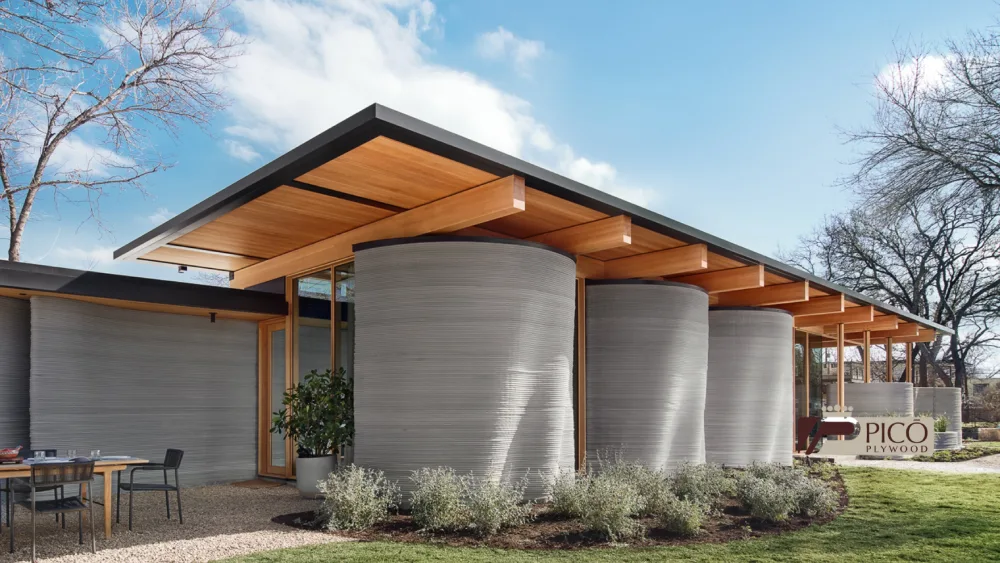
Table of Contents for the Article
Phenolic plywood has become one of the most versatile and reliable engineered wood products in modern construction, transport, and manufacturing industries across Europe. But what exactly is phenolic plywood used for, and why has it gained such widespread adoption among professionals and DIY enthusiasts alike?
This comprehensive guide explores the diverse applications, technical properties, and practical advantages of phenolic plywood, helping you understand when and why to choose this high-performance material for your next project.
Phenolic plywood is a specialized type of engineered wood panel consisting of multiple thin layers of wood veneer bonded together with phenolic resin adhesives under high heat and pressure. Unlike standard plywood that uses urea-formaldehyde adhesives, phenolic plywood employs phenol-formaldehyde resins, which provide superior water resistance, durability, and structural integrity.
The key difference between phenolic plywood and other plywood types lies in its adhesive system and surface treatment. Phenolic plywood often features a hard, smooth, or textured phenolic film coating on one or both faces, creating a virtually impermeable barrier against moisture, chemicals, and wear.
European demand for phenolic plywood continues to grow across multiple sectors:
Construction industry: Builders rely on phenolic plywood for concrete formwork, exterior cladding, and structural applications where moisture resistance is critical.
Transport sector: Fleet operators and vehicle manufacturers specify phenolic plywood for truck beds, trailer floors, and commercial vehicle interiors due to its exceptional load-bearing capacity and weather resistance.
Furniture manufacturing: Cabinet makers and interior designers increasingly choose phenolic plywood for bathroom furniture, kitchen installations, and commercial fixtures that must withstand humid environments.
Marine applications: Boat builders appreciate phenolic plywood’s resistance to saltwater exposure, making it ideal for boat decking plywood and interior marine joinery.
The material’s versatility stems from its ability to combine the natural warmth and workability of wood with the performance characteristics of synthetic materials, offering a practical solution for demanding applications.
Understanding how phenolic plywood is manufactured helps explain its superior performance characteristics. The production process involves several carefully controlled steps:
Layers of wood and phenolic adhesives: Manufacturers begin with carefully selected wood veneers, typically ranging from 1.5mm to 3mm thick. These layers are arranged with alternating grain directions to maximize strength and dimensional stability. Between each veneer layer, technicians apply phenolic resin adhesive, which penetrates the wood fibers and creates a chemical bond.
Hot pressing process: The assembled veneer stack undergoes hot pressing at temperatures between 140-160°C under pressures of 1.2-1.8 MPa. This heat activates the phenolic resin, causing it to cure and form permanent cross-linked bonds between wood layers. The process typically takes 8-12 minutes depending on panel thickness, ensuring complete adhesive curing throughout the board.
Types of base woods: European phenolic plywood manufacturers utilize various wood species depending on the intended application:
Compliance with European standards: Quality phenolic plywood manufactured for European markets must meet stringent regulatory requirements:
Reputable suppliers provide documentation proving compliance with these standards, giving specifiers and end-users confidence in material performance and environmental responsibility.
Phenolic plywood’s exceptional performance across diverse applications stems from its unique combination of physical and mechanical properties:
Mechanical and moisture resistance: The phenolic resin adhesive system creates a waterproof bond between veneer layers, allowing phenolic plywood to maintain structural integrity even under prolonged moisture exposure. While standard plywood may delaminate when wet, phenolic plywood retains approximately 85-90% of its dry strength when saturated. This makes it suitable for exterior construction, vehicle flooring, and marine plywood applications where moisture contact is inevitable.
Dimensional stability: Cross-laminated construction minimizes expansion and contraction across the panel surface. Phenolic plywood typically exhibits dimensional change of less than 0.3% across the face grain and less than 0.5% along the length when humidity fluctuates between 30-85% relative humidity. This stability prevents warping, twisting, and cupping that plague lesser materials in demanding environments.
Non-slip or smooth surfaces: Manufacturers offer phenolic plywood with various surface treatments to match specific applications. Film-faced phenolic plywood features a textured overlay providing excellent slip resistance for truck floors, scaffolding platforms, and work surfaces. Smooth-faced versions with high-gloss phenolic coating serve architectural applications requiring easy cleaning and attractive appearance.
Thermal and acoustic insulation: The layered wood structure provides moderate thermal insulation (R-value approximately 1.25 per inch of thickness) and sound dampening properties. While not a dedicated insulation material, phenolic plywood contributes to overall building performance and reduces noise transmission in vehicle interiors and partition walls.
Compatibility with varnishes, sealers, or phenolic coatings: The dense, smooth surface of phenolic plywood accepts a wide range of finishing materials. Water-based and solvent-based varnishes, polyurethane sealers, epoxy coatings, and additional phenolic films adhere well to properly prepared surfaces. This compatibility allows customization for specific aesthetic or protective requirements.
Like any building material, phenolic plywood presents both strengths and limitations that influence its suitability for specific applications.
High durability and structural strength: Phenolic plywood delivers exceptional load-bearing capacity, with bending strength typically 30-40% higher than standard plywood of equivalent thickness. The phenolic resin creates rigid bonds that resist impact damage, wear, and structural fatigue over years of demanding service.
Withstands extreme humidity conditions: The waterproof phenolic adhesive allows panels to endure continuous moisture exposure without delamination or significant strength loss. This makes phenolic plywood the preferred choice for bathroom furniture, exterior applications, and marine plywood installations where water resistance is non-negotiable.
Easy to work and machine: Despite its density and hardness, phenolic plywood machines cleanly using standard woodworking tools. It cuts, drills, and routs without excessive tool wear, allowing fabricators to create complex shapes and joinery. The material accepts mechanical fasteners reliably and holds screws securely even near edges.
Suitable for indoor and outdoor use: With proper edge sealing and appropriate grade selection, phenolic plywood performs reliably in both protected interior environments and exposed outdoor applications. This versatility simplifies material selection for projects spanning multiple exposure conditions.
Good value for money compared to plastic or metal panels: When evaluated on a lifecycle cost basis, phenolic plywood often proves more economical than alternatives like HDPE plastic sheets or aluminum panels. The combination of lower initial cost, easier fabrication, and adequate service life creates favorable economics for many commercial and industrial applications.
Higher price than standard boards: Phenolic plywood typically costs 40-80% more than conventional plywood or oriented strand board (OSB board) of similar thickness. The premium reflects superior raw materials, specialized adhesives, and more intensive manufacturing processes. Budget-conscious projects may find this initial cost challenging.
Heavier in thicker formats: The dense construction and resin content make phenolic plywood approximately 15-25% heavier than standard plywood. A 15mm phenolic birch panel weighs roughly 9-11 kg/m², which can complicate handling and increase transportation costs for large projects.
Edge sealing required for maximum durability: While the face surfaces resist moisture penetration, cut edges expose vulnerable wood layers to water absorption. Protecting these edges with polyurethane sealer, epoxy paint, or edge banding becomes essential for exterior applications and high-humidity environments. This adds installation time and cost.
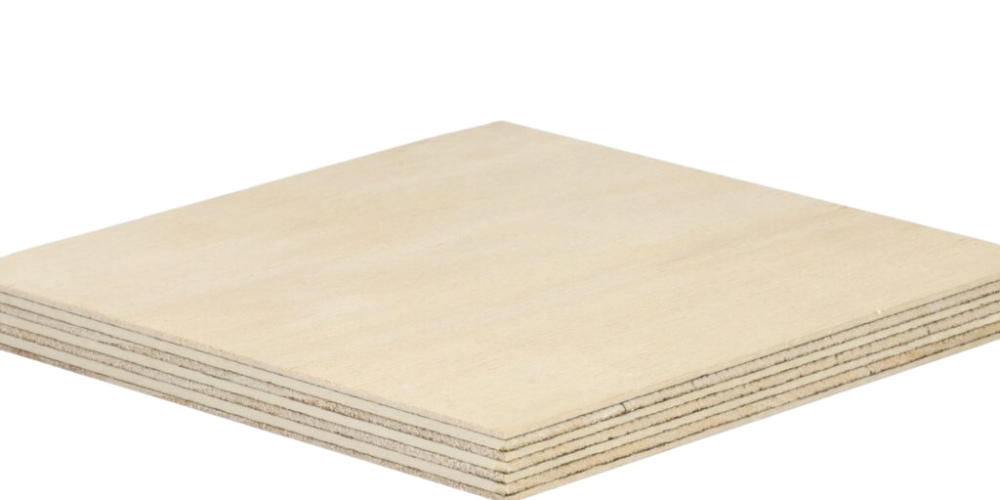
Phenolic plywood’s combination of strength, moisture resistance, and workability makes it the material of choice across numerous professional applications throughout European markets.
Cladding: Architects specify phenolic plywood for exterior facade systems where its dimensional stability and weather resistance ensure long-term performance. The material accepts various finish treatments, from natural wood appearance to bold painted surfaces, supporting diverse design visions.
Technical floors: Raised access flooring systems in data centers, commercial offices, and industrial facilities utilize phenolic plywood panels for their load-bearing capacity and resistance to humidity fluctuations. The material maintains flatness under point loads and distributed weight.
Formwork: Concrete formwork applications represent one of the largest volume uses for phenolic plywood in construction. The smooth phenolic film coating releases cleanly from cured concrete without adhesion, while the waterproof structure withstands repeated exposure to wet concrete mix. Quality formwork plywood provides 20-50 reuses depending on handling and maintenance.
Lightweight structural elements: Modern timber frame construction incorporates phenolic plywood for shear walls, diaphragms, and bracing panels where moisture resistance and consistent strength properties ensure structural reliability.
Bathroom furniture: The harsh environment of bathrooms demands materials that resist constant humidity, occasional water splashing, and cleaning chemicals. Phenolic plywood excels in vanity cabinets, storage units, and shower enclosures where moisture-resistant MDF would eventually fail.
Kitchens: Commercial kitchen installations and high-end residential projects benefit from phenolic plywood’s resistance to steam, heat, and cleaning products. Cabinet boxes, countertop substrates, and shelving maintain dimensional stability and strength throughout years of demanding service.
Wardrobes: Closet and wardrobe systems built from phenolic plywood resist the humidity problems that plague basement and garage storage areas. The material won’t warp or delaminate in these challenging conditions.
Commercial furnishings: Retail fixtures, restaurant furniture, and hospitality installations choose phenolic plywood for its durability and ease of maintenance. The hard surface resists scratching and cleaning wear that would quickly damage standard plywood.
Truck floors: Commercial truck beds endure extreme abuse from loaded pallets, forklift traffic, and weather exposure. Anti-slip phenolic plywood provides the necessary traction, load distribution, and longevity to withstand years of heavy-duty service. The material resists oil, fuel, and chemical spills common in freight operations.
Trailers: Both cargo trailers and livestock trailers rely on phenolic plywood flooring for its combination of strength and moisture resistance. The material supports heavy loads while resisting rot and deterioration from animal waste or cargo leakage.
Caravans: Recreational vehicle manufacturers specify phenolic plywood for flooring, wall panels, and furniture components throughout caravan interiors. The material’s light weight relative to its strength helps control vehicle weight while providing durability.
Trains: Railway carriage flooring and interior paneling utilize phenolic plywood’s fire-retardant grades for passenger safety combined with the wear resistance necessary for high-traffic applications.
Decks: Boat decking plywood represents a critical marine application where phenolic plywood’s moisture resistance prevents the rot and delamination that would destroy standard plywood. The material withstands saltwater spray, sun exposure, and constant moisture while providing secure footing.
Bulkheads: Structural dividers and load-bearing walls within vessels require materials that maintain strength in the marine environment. Phenolic plywood delivers reliable performance without the weight penalty of solid timber.
Interior furniture of boats and vessels: Galley cabinets, sleeping berths, and storage compartments built from phenolic plywood resist the condensation and humidity inherent in marine environments. The material combines practicality with the aesthetic warmth of natural wood.
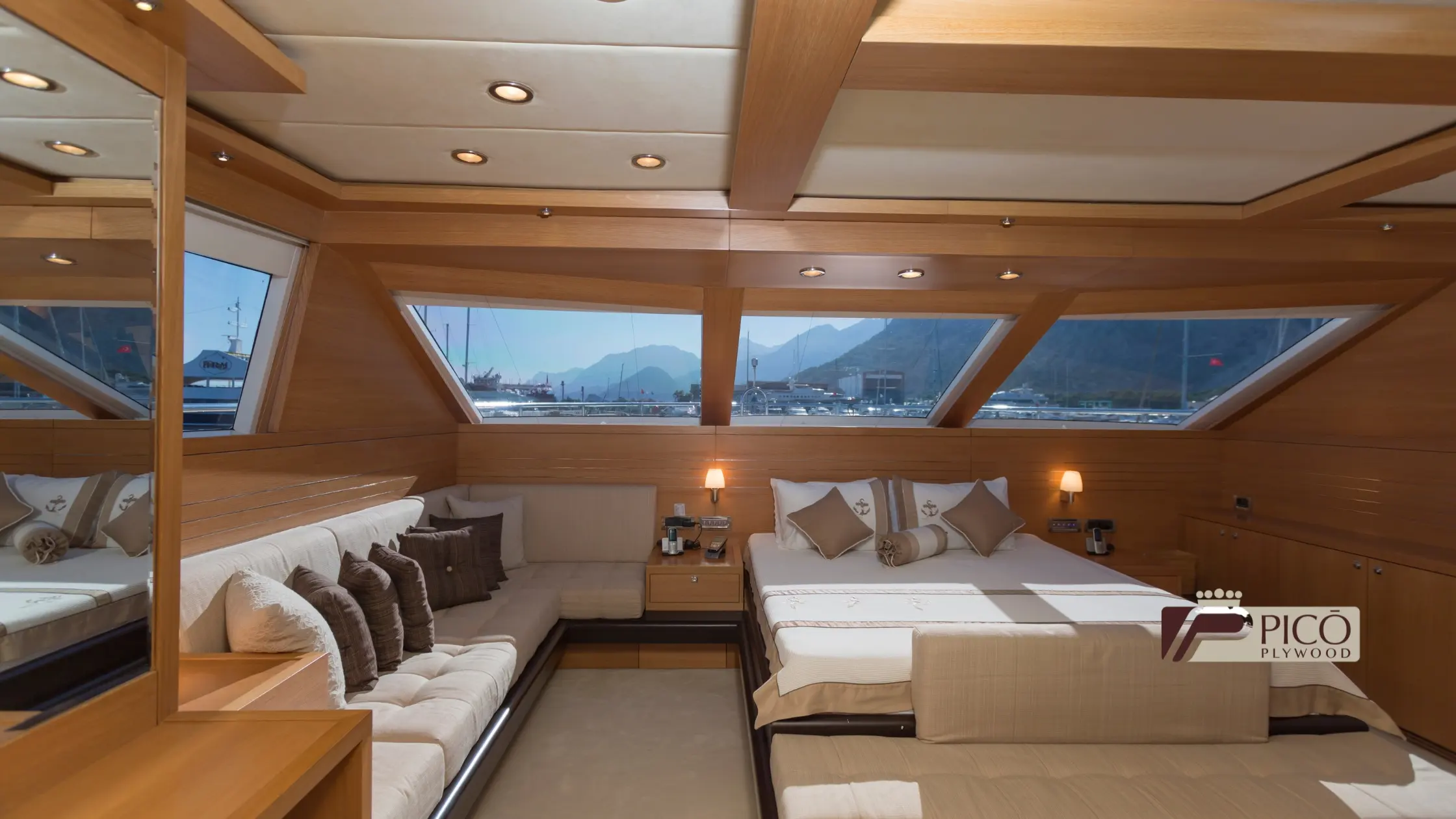
Gyms: Weight room flooring, wall protection panels, and equipment platforms built from anti-slip phenolic plywood withstand dropped weights, equipment traffic, and cleaning procedures that would quickly damage lesser materials.
Halls or courts: Multi-purpose sports halls utilize phenolic plywood for stage platforms, equipment storage systems, and protective wall panels where durability and easy maintenance justify the material investment.
The phenolic plywood category encompasses several distinct product variations, each optimized for specific application requirements.
Brown phenolic plywood: The most common variety features a brown phenolic film coating produced from standard phenolic resin. This finish provides excellent moisture resistance and durability for construction formwork, vehicle flooring, and industrial applications where appearance is secondary to performance. The brown color comes from the natural phenolic resin and offers good UV resistance.
Black phenolic plywood: Created using specialized black-pigmented phenolic resin, this variant serves architectural applications requiring dark aesthetics or applications where the surface will remain visible. Black phenolic plywood appears in modern furniture design, exhibition stands, and interior feature walls where the bold color supports the design concept.
Transparent phenolic plywood: This specialized product uses clear phenolic resin that allows the natural wood grain to remain visible while providing surface protection. Transparent phenolic plywood suits high-end furniture and architectural applications where natural wood beauty must combine with enhanced durability.
Film-faced phenolic plywood with textured or patterned surfaces provides crucial slip resistance for safety-critical applications. Common patterns include:
These textured surfaces make anti-slip phenolic plywood ideal for industrial flooring, truck beds, scaffolding platforms, and any application where personnel or equipment must maintain secure footing in potentially slippery conditions.
Interior phenolic plywood: Manufactured using EN 636-2 standards for humid interior conditions, these panels provide moisture resistance suitable for bathrooms, kitchens, and climate-controlled spaces. While water-resistant, interior grades shouldn’t endure continuous exterior weather exposure.
Exterior phenolic plywood: Meeting EN 636-3 specifications for outdoor use, exterior grades utilize more weather-resistant adhesives and often feature enhanced edge sealing or full phenolic film coating on all surfaces. These panels withstand direct rain, sun exposure, and freeze-thaw cycles when properly maintained.
The distinction between interior and exterior grades involves resin formulation, veneer quality, and manufacturing parameters rather than fundamental material differences. Always verify the appropriate grade for your specific exposure conditions.
European phenolic plywood suppliers stock standard metric thicknesses optimized for various applications:
Thickness | Weight (kg/m²) | Primary Applications |
9mm | 5.5-6.5 | Interior furniture backs, drawer bottoms, light paneling |
12mm | 7.5-8.5 | Cabinet construction, interior walls, light-duty flooring |
15mm | 9-11 | Standard vehicle flooring, furniture cases, work surfaces |
18mm | 11-13 | Heavy-duty truck floors, structural panels, formwork |
21mm | 13-15 | Industrial flooring, high-load vehicle applications |
24mm | 15-17 | Extreme duty flooring, marine bulkheads, structural beams |
27-30mm | 17-19 | Specialized heavy industrial and marine applications |
Standard panel dimensions follow European conventions: 2440mm x 1220mm (8′ x 4′) and 2500mm x 1250mm (metric standard). Some manufacturers offer 3050mm x 1525mm (10′ x 5′) sheets for applications requiring larger uncut sections. Custom sizes can be ordered for volume projects, though standard formats provide better availability and pricing.
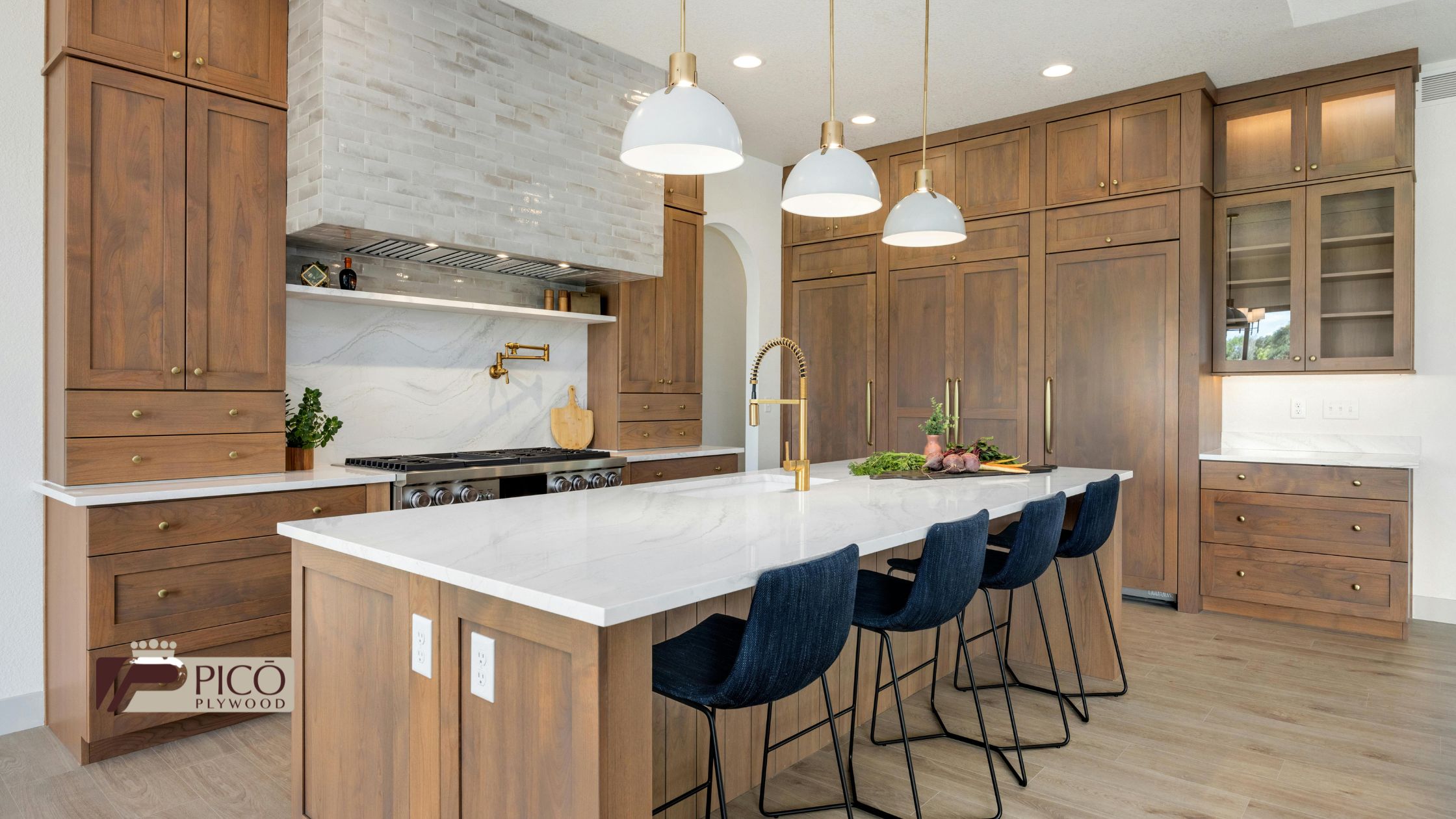
Understanding the cost factors and expected service life helps evaluate phenolic plywood’s value proposition for your specific application.
Type of base wood: Wood species significantly impacts both cost and performance characteristics. Premium birch phenolic plywood commands the highest prices due to superior strength and appearance, typically ranging €40-65 per square meter for 18mm thickness. Okoume phenolic plywood offers mid-range pricing at €35-50 per square meter with excellent marine performance. Pine and poplar-based panels provide economy options at €25-40 per square meter while delivering adequate performance for less demanding applications.
Surface finish: Basic brown film-faced phenolic plywood represents the most economical option. Adding anti-slip texture patterns increases costs by approximately 15-25% due to specialized film materials and manufacturing processes. Black or colored phenolic finishes command premium pricing, adding 20-35% to base costs. Smooth high-gloss phenolic coating for architectural applications can increase prices by 30-40%.
Thickness: Price scales roughly proportionally with material volume, though thicker panels often show slight economies of scale. An 18mm panel typically costs 80-90% more than a 9mm panel of identical surface area and quality, rather than a full doubling of price.
Origin and certifications: European-manufactured phenolic plywood typically costs 15-30% more than Asian imports, reflecting higher labor costs and stricter environmental standards. However, European products often provide superior consistency and documented compliance with EN standards. FSC or PEFC certification adds 5-10% to material costs but provides assurance of sustainable forestry practices and may be required for green building certifications or public procurement.
Protected interior applications: When used for furniture or interior construction in climate-controlled environments, phenolic plywood can provide 20-30+ years of service life with minimal maintenance beyond normal cleaning. The material resists common indoor hazards like humidity fluctuations and minor water exposure.
Vehicle flooring and transport applications: Truck bed floors and trailer installations typically achieve 8-15 years of service depending on load intensity and maintenance practices. Regular cleaning to remove corrosive materials and periodic inspection of edge sealing significantly extends useful life. Professional transport operators report achieving 10-12 years from quality 18mm anti-slip phenolic plywood with proper care.
Marine applications: Boat decking plywood and interior marine joinery can last 15-25 years in saltwater environments when properly maintained. Critical factors include thorough edge sealing, regular inspection of fastener penetrations, and protective coating maintenance. Freshwater applications generally provide longer service life due to reduced corrosive exposure.
Exterior construction: Phenolic plywood in exposed architectural applications delivers 15-25 years of performance when protected by roof overhangs or appropriate surface treatments. Fully exposed installations subject to direct weather may show 10-15 years of optimal service before requiring replacement.
Concrete formwork: Form panels achieve 20-50 reuses depending on concrete mix aggressiveness, demolding practices, and cleaning procedures. Careful handling and storage between pours maximizes the number of economical reuses.
Extending durability through proper maintenance practices:
Regular edge inspection and resealing prevents the primary failure mode of phenolic plywood. Applying polyurethane sealer or epoxy coating to cut edges immediately after fabrication and annually thereafter prevents moisture penetration into vulnerable wood layers.
Cleaning with pH-neutral detergents removes contaminants without degrading phenolic surfaces or edge sealing. Avoid pressure washing, which can force water into seams and fastener holes.
Ventilated storage allows moisture equalization and prevents mold growth on surfaces that remain wet after cleaning. Never store phenolic panels directly on the ground or stack them face-to-face while wet.
Periodic reapplication of protective coatings maintains weather resistance for exterior installations. Most varnishes and sealers require reapplication every 2-4 years depending on exposure severity.
Several alternative materials compete with phenolic plywood in various applications, each offering distinct advantages and limitations.
Medium-density fiberboard (MDF) treated with moisture-resistant additives provides a lower-cost alternative for furniture and interior applications. Moisture-resistant MDF offers smooth, uniform surfaces ideal for painted finishes and costs 30-50% less than phenolic plywood. However, MDF lacks the structural strength and edge-holding capacity of plywood construction. It cannot substitute for phenolic plywood in structural applications, vehicle flooring, or marine plywood installations. Water resistance remains inferior to phenolic plywood despite moisture-resistant formulations.
Oriented strand board consists of compressed wood strands bonded with waterproof adhesives. OSB board costs significantly less than phenolic plywood—often 60-70% cheaper—making it attractive for construction sheathing and temporary structures. The material provides adequate structural performance for many building applications. However, OSB lacks the smooth surfaces, dimensional stability, and aesthetic qualities of phenolic plywood. The rough texture prevents use in furniture or finished applications, and OSB shows greater thickness swelling when exposed to moisture cycles.
Traditional marine plywood manufactured to BS 1088 or equivalent standards uses selected hardwoods and waterproof adhesives optimized specifically for boat building. Marine plywood often employs void-free construction with higher-grade veneers than standard phenolic plywood. While marine plywood excels in boat decking plywood and structural marine applications, it typically costs 20-40% more than phenolic plywood with comparable moisture resistance. The premium becomes difficult to justify for non-marine applications where phenolic plywood provides adequate performance at lower cost.
High-pressure laminate compact board consists of multiple layers of kraft paper impregnated with phenolic resin and compressed under extreme pressure. HPL compact board delivers exceptional surface hardness, chemical resistance, and hygiene properties ideal for laboratory countertops, public restrooms, and food preparation areas. The material resists impacts, scratches, and staining better than phenolic plywood. However, HPL compact board costs 2-3 times more than phenolic plywood and cannot be used for structural applications. The material works poorly with traditional woodworking joinery and requires specialized cutting tools and fastening techniques.
Comparative summary: For most construction, transport, and general furniture applications, phenolic plywood provides the optimal balance of performance, workability, and cost. Moisture-resistant MDF suits non-structural interior applications with tight budgets. OSB board serves as an economical construction material where aesthetics don’t matter. Marine plywood makes sense for specialized boat building projects. HPL compact board justifies its premium cost in commercial applications requiring maximum durability and hygiene.
Proper maintenance practices significantly extend phenolic plywood service life and preserve its performance characteristics.
Regular cleaning with neutral products: Clean phenolic surfaces using pH-neutral detergents diluted according to manufacturer recommendations. Apply cleaning solution with soft brushes or microfiber cloths, working in circular motions to lift embedded dirt. Rinse thoroughly with clean water and allow surfaces to air dry completely. Avoid acidic or alkaline cleaners that can degrade phenolic film coatings over time. For anti-slip surfaces, use stiff-bristle brushes to clean texture patterns where dirt accumulates.
Edge and cut area sealing: The most critical maintenance task involves protecting exposed wood edges from moisture penetration. Apply polyurethane sealer, epoxy coating, or specialized edge-sealing products immediately after cutting phenolic plywood to size. Build up 2-3 thin coats rather than one thick application for better penetration and adhesion. Inspect edge sealing annually and reapply as needed when coating shows wear or damage. Pay special attention to areas around fastener penetrations, which create vulnerable moisture entry points.
Ventilated storage: When storing phenolic plywood panels between uses, position them vertically or on edge with adequate air circulation around all surfaces. If horizontal stacking is necessary, separate panels with wooden slats to create air gaps preventing moisture accumulation. Store panels off the ground using pallets or blocking, protecting them from ground moisture and facilitating air movement. Cover outdoor storage with breathable tarps that shed rain while allowing moisture vapor to escape.
Reapplication of protective coatings: Exterior installations and high-wear applications benefit from periodic renewal of surface protection. For smooth phenolic surfaces, apply marine varnish or polyurethane coating every 2-3 years to maintain weather resistance. Lightly sand the existing finish with 220-grit sandpaper to create a mechanical key for the new coating. Clean away sanding dust before applying 2-3 thin coats of fresh protective finish. Anti-slip textured surfaces rarely require coating renewal since the phenolic film provides long-lasting protection, but damaged areas should receive spot repair with appropriate materials.
European phenolic plywood markets operate under comprehensive regulatory frameworks ensuring product quality, safety, and environmental responsibility.
EN 314-2 (bonding strength): This standard specifies testing methods for determining adhesive bond quality in plywood construction. The test measures shear strength of glue lines both in dry conditions and after various moisture exposure cycles. Phenolic plywood must demonstrate maintained bonding integrity after boiling water immersion, repeated wetting/drying cycles, and long-term humidity exposure. Class 3 classification under EN 314-2 indicates the highest weather resistance suitable for permanent exterior exposure.
EN 636 (service classes): This crucial standard categorizes plywood into service classes based on environmental exposure:
Quality phenolic plywood typically meets Class 2 or Class 3 requirements, with exterior grades specifically manufactured for Class 3 service. Specifiers should verify the appropriate class for their application’s exposure conditions.
CE marking: The Construction Products Regulation (EU) 305/2011 requires CE marking for plywood products sold into European construction markets. The CE mark indicates compliance with harmonized European standards and confirms the manufacturer has documented product performance characteristics. The accompanying Declaration of Performance (DoP) document specifies technical properties including strength class, formaldehyde emission level, and reaction to fire classification.
FSC or PEFC certificates: Forest Stewardship Council and Programme for the Endorsement of Forest Certification schemes verify sustainable forest management throughout the supply chain. FSC certification typically commands market preference and may be required for green building certifications like LEED or BREEAM. PEFC provides an alternative certification accepted in most European markets. Chain of custody documentation traces certified wood from forest to finished product, ensuring sustainability claims’ validity.
Compliance with the EUTR regulation: The European Union Timber Regulation (EUTR) prohibits illegally harvested timber from entering European markets. Operators placing timber products on the EU market must implement due diligence systems tracing wood origin and verifying legal harvesting. Reputable phenolic plywood suppliers provide EUTR compliance documentation including harvest location, species identification, and legality verification. This regulation protects European buyers from unknowingly supporting illegal logging while ensuring fair competition for responsible suppliers.
When specifying phenolic plywood for professional projects, request certification documentation verifying compliance with relevant standards. Quality suppliers like PicoPlywood maintain comprehensive records demonstrating regulatory compliance and sustainable sourcing practices.
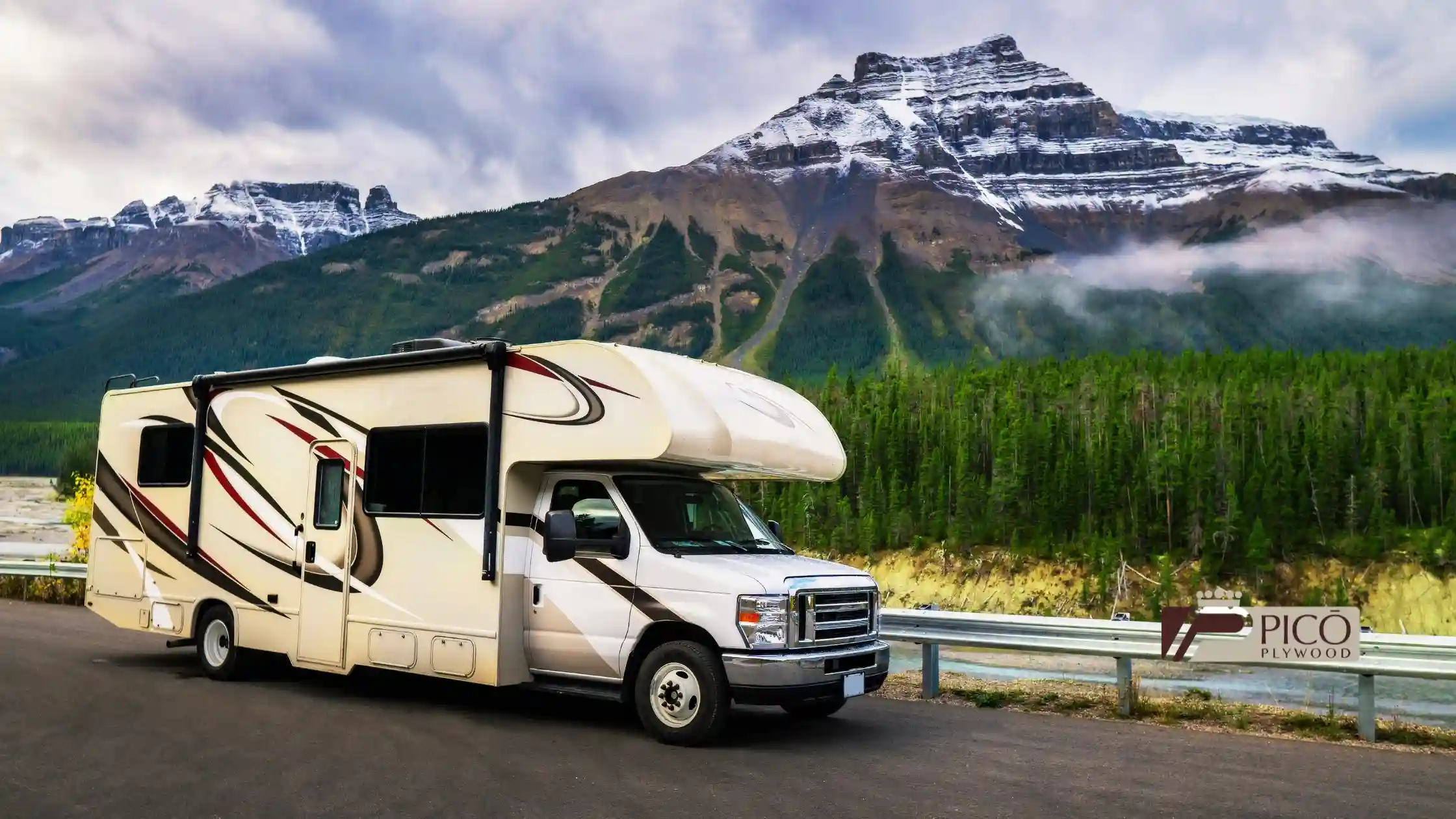
Marine plywood is manufactured specifically for boat building applications using carefully selected hardwoods free from voids or defects, bonded with special adhesives that resist saltwater degradation. The veneers undergo rigorous grading to ensure structural integrity and appearance quality suitable for visible marine joinery.
Phenolic plywood, while also highly water-resistant, serves broader applications across construction, transport, and industrial furniture sectors. It features hard phenolic film coating that creates an impermeable surface barrier, making it more affordable and practical for applications like vehicle flooring and concrete formwork where the enhanced surface protection matters more than void-free core construction.
For boat decking plywood and below-waterline structural applications, dedicated marine plywood often proves superior. For above-water marine joinery, vehicle floors, and moisture-exposed construction, phenolic plywood typically provides better value with its durable surface finish and lower cost.
Yes, phenolic plywood performs excellently in outdoor applications when properly specified and installed. Exterior-grade phenolic plywood manufactured to EN 636-3 standards contains waterproof adhesives that maintain bonding integrity through weather exposure, freeze-thaw cycles, and prolonged moisture contact.
The phenolic film coating provides exceptional protection against rain, sun exposure, and humidity. However, successful outdoor performance requires attention to edge protection. Cut edges expose vulnerable wood layers that can absorb moisture, leading to delamination and deterioration. Apply polyurethane sealer, epoxy paint, or specialized edge-sealing products to all cut edges, fastener holes, and penetrations before installation.
Additional considerations for outdoor use include adequate drainage to prevent standing water, periodic inspection of edge sealing integrity, and protective coating renewal every 2-4 years for optimal longevity. Properly maintained exterior phenolic plywood installations deliver 15-25 years of reliable service.
Vehicle flooring applications require balancing structural strength, weight considerations, and cost factors. Recommended thicknesses vary by vehicle type and loading conditions:
Light commercial vehicles and vans: 12mm phenolic plywood provides adequate strength for hand-loaded cargo and light palletized goods. This thickness minimizes weight addition while delivering sufficient durability for moderate-duty applications.
Standard truck beds and cargo trailers: 15mm or 18mm anti-slip phenolic plywood represents the industry standard for most commercial transport applications. These thicknesses support forklift traffic, loaded pallets, and typical freight operations while maintaining reasonable weight. The 15mm option suits lighter-duty applications, while 18mm serves heavy commercial use.
Heavy-duty applications: 21mm phenolic plywood handles extreme loads including heavy equipment transport, specialized cargo, and livestock trailers where concentrated loads occur. The additional thickness provides structural reserve and extends service life under punishing conditions.
Weight considerations: Remember that thicker phenolic plywood adds vehicle weight, reducing payload capacity and fuel efficiency. An 18mm floor weighs approximately 11-13 kg/m², while 12mm weighs 7.5-8.5 kg/m². For a typical 13.6m trailer, the difference amounts to roughly 400kg of payload capacity.
Edge protection represents the single most important maintenance factor for phenolic plywood longevity. The phenolic film coating protects face surfaces effectively, but cut edges expose absorbent wood layers vulnerable to moisture damage.
Immediate sealing: Apply edge sealant within hours of cutting phenolic plywood to size. Fresh-cut wood readily absorbs penetrating sealers, creating better protection than sealing after moisture has already entered the edge grain.
Product selection: Choose between several effective edge-sealing approaches:
Application technique: Clean edges thoroughly, removing sawdust and debris. Apply the first coat liberally, allowing penetration into exposed wood fibers. After the first coat dries, lightly sand and apply 2-3 additional coats, building thickness gradually. Extend sealer application onto face surfaces approximately 10-15mm beyond the edge for comprehensive protection.
Fastener area protection: Drill holes and fastener penetrations require similar attention. Apply sealer into drilled holes before inserting screws or bolts. Use appropriate washers or sealing washers under fastener heads to prevent water entry.
Sourcing quality phenolic plywood with proper certifications requires selecting suppliers committed to product quality and regulatory compliance. At PicoPlywood.es, we specialize in premium European phenolic plywood with comprehensive certification documentation.
Our inventory includes:
All PicoPlywood products carry:
We provide technical specification sheets, material safety data, and application guidance to help you select the optimal phenolic plywood for your project requirements. Whether you’re building marine furniture, installing vehicle flooring, or specifying construction materials, our materials experts offer personalized support throughout the selection and procurement process.
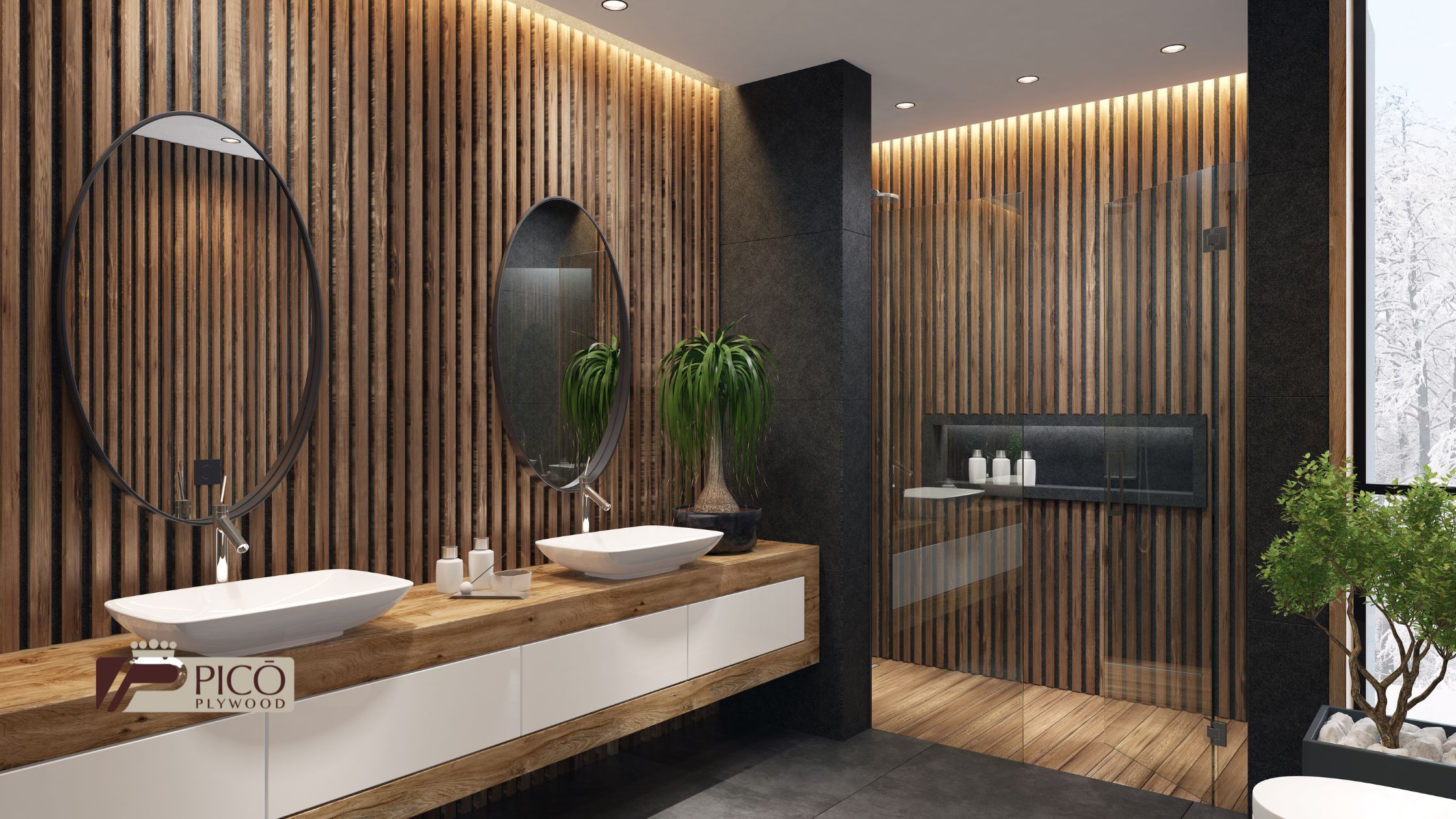
Selecting the right phenolic plywood specification requires evaluating several key factors:
Application environment: Determine the moisture exposure level your project will face. Interior furniture applications may use EN 636-2 humid interior grades, while exterior construction, vehicle flooring, and marine applications demand EN 636-3 exterior specifications.
Load requirements: Calculate expected loads and structural demands. Heavier loads require thicker panels with higher-strength wood species. Vehicle flooring typically needs 15-18mm thickness, while furniture applications often succeed with 9-12mm material.
Surface requirements: Consider whether your application needs anti-slip texture for safety, smooth surfaces for aesthetics, or specialized colors matching design requirements. Film-faced phenolic plywood with texture patterns provides excellent traction for industrial and transport applications, while smooth phenolic finishes suit furniture and architectural uses.
Wood species selection: Balance performance requirements against budget constraints. Birch delivers premium strength and appearance for demanding applications. Okoume provides excellent marine performance with lighter weight. Pine and poplar offer economy while maintaining adequate performance for less critical uses.
Certification requirements: Verify any regulatory or project-specific certification needs. Public projects may mandate FSC certification. Construction applications require CE marking. Green building certifications may specify particular environmental credentials.
Budget considerations: Evaluate lifecycle costs rather than initial purchase price alone. Premium phenolic plywood may cost more upfront but deliver longer service life and reduced maintenance expenses. Calculate total cost of ownership including installation labor, maintenance requirements, and expected replacement intervals.
Edge exposure: Projects with extensive cut edges require more attention to edge sealing and may justify specifying slightly thicker material to provide greater sealing depth and structural reserve.
Availability and lead times: Standard thicknesses and formats (15mm, 18mm in 2440x1220mm or 2500x1250mm) typically ship quickly from stock. Custom specifications may require extended lead times for manufacturing.
At PicoPlywood, we simplify the selection process by offering high-quality European phenolic plywood backed by comprehensive technical support. Our team understands the demanding requirements of construction, marine, transport, and furniture applications, providing expert guidance tailored to your specific project
✓ Certified quality materials: All our phenolic plywood carries CE marking, FSC certification, and full compliance with European standards EN 636 and EN 314, ensuring you receive materials that meet regulatory requirements and perform reliably.
✓ Extensive product range: From premium birch phenolic plywood for high-end furniture and marine applications to cost-effective pine options for construction and industrial use, our inventory covers the full spectrum of phenolic plywood specifications.
✓ Technical expertise: Our materials specialists bring decades of experience across construction, marine, and manufacturing sectors. We help you navigate specification decisions, ensuring you select the optimal material for your application’s unique demands.
✓ Sustainable sourcing: We partner exclusively with manufacturers committed to responsible forestry practices, providing FSC and PEFC certified materials that support your environmental goals while meeting green building requirements.
✓ Reliable supply chain: Our established relationships with European manufacturers ensure consistent material quality and dependable delivery schedules, keeping your projects on track.
✓ Custom solutions: Beyond standard formats, we coordinate custom cutting, edge sealing, and specialized surface treatments when your project requires tailored specifications.
Whether you’re a professional contractor specifying materials for a major construction project, a boat builder seeking reliable marine plywood, a fleet operator maintaining commercial vehicles, or a furniture maker requiring premium materials, PicoPlywood delivers the quality, service, and expertise that successful projects demand.
Discover our complete range of certified phenolic plywood and receive personalized technical guidance from our materials experts. Visit PicoPlywood today or contact our team directly to discuss your specific requirements. We’re here to ensure you select the perfect phenolic plywood solution for your application—backed by quality materials, comprehensive certifications, and the technical support you need for project success.
Understanding what phenolic plywood is used for opens possibilities across countless applications where durability, moisture resistance, and reliable performance matter. From boat decking plywood that withstands saltwater exposure to vehicle flooring that endures years of heavy cargo, from architectural cladding that weathers the elements to bathroom furniture that resists daily humidity—phenolic plywood delivers versatile solutions for demanding professional applications.
The material’s combination of natural wood workability with engineered performance characteristics creates unique value that alternative materials struggle to match. While OSB board, moisture-resistant MDF, and HPL compact board each serve specific niches, phenolic plywood’s balanced properties make it the preferred choice when projects demand strength, moisture resistance, and practical fabrication characteristics.
Success with phenolic plywood requires understanding material grades, proper installation techniques, and maintenance practices. Selecting appropriate EN 636 service classes, protecting vulnerable edges, and choosing certified suppliers ensures your phenolic plywood installation delivers the long-term performance that justifies the material investment.
At PicoPlywood, we’re committed to supplying the highest quality European phenolic plywood with the technical support and certification documentation professional projects demand. Our expertise spans marine applications, transport industry requirements, construction specifications, and furniture manufacturing needs—bringing decades of materials knowledge to every customer interaction.
Contact us today to explore how phenolic plywood can solve your project challenges with reliable, certified materials backed by expert guidance every step of the way.
pico Plywood Contact
Contact Information
To learn more about our Plywood Products or discuss your project requirements, please reach out to us through the following channels.

Plywood supplier, Plywood boards, Veneered plywood panels, Special Plywood
Contact information

Esta web utiliza cookies para que podamos ofrecerte la mejor experiencia de usuario posible. La información de las cookies se almacena en tu navegador y realiza funciones tales como reconocerte cuando vuelves a nuestra web o ayudar a nuestro equipo a comprender qué secciones de la web encuentras más interesantes y útiles.
Strictly necessary cookies must always be enabled so that we can save your cookie setting preferences.
If you deactivate this cookie we will not be able to save your preferences. This means that each time you visit this website you will have to activate or deactivate cookies again.
Esta web utiliza Google Analytics para recopilar información anónima tal como el número de visitantes del sitio, o las páginas más populares.
Dejar esta cookie activa nos permite mejorar nuestra web.
Please enable strictly necessary cookies first so we can save your preferences!